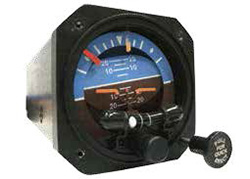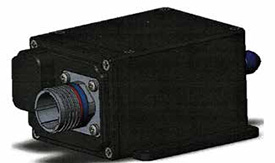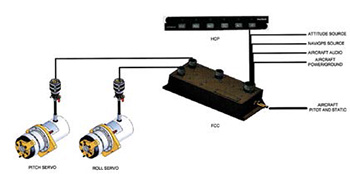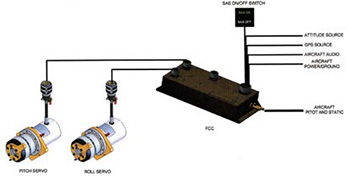
Helicopter Stability from Genesys Aerosystems

The most basic rule of flying a helicopter is to NEVER take your hand off the cyclic control stick. That is good advice since helicopters are generally not stable flying platforms. Today, however, there are many helicopters that have helicopter stability augmentation systems (HeliSAS®) and autopilot systems that allow the pilot to do just that — take their hands off the cyclic stick and the systems work to hold the aircraft in the pilot’s desired flight attitude.
Genesys Aerosystems in Mineral Wells, TX, makes many different systems for the aviation marketplace, including HeliSAS and autopilot systems for helicopters. Earlier this year, it announced that its HeliSAS and autopilot systems were available to retrofit into the Robinson R-44 helicopter.
Before taking a look at the Genesys Aerosystems HeliSAS and autopilot, let’s refresh our memories on just what these systems are designed to do.
HeliSAS
The engaged SAS mode supplies short-term attitude and attitude rate stabilization for use in hands-on flying. It stabilizes the helicopter against outside disturbances andaugments or helps pilot cyclic control input. The SAS mode is designed so that pilot-controlled motions (pitch and roll) are enhanced while helicopter motions caused by outside disturbances are counteracted. This mode of operation improves basic helicopter handling qualities.
When helicopter motion (a wind gust) is detected, a stabilizing control signal proportional to the amplitude and rate of the motion is generated in the SAS computer and routed to the appropriate actuators. SAS is generally used during low and slow maneuvering where the pilot might be making constant attitude changes. SAS is flown hands on by design.
Autopilot
As complex as some of today’s autopilot systems have become, they all can be narrowed down to providing at least one main function:stability.In essence, the autopilot takes care of the routine repetitive tasks and allows the pilot the ability to concentrate on other flight concerns.
Today’s helicopter SAS/autopilot systems can be two-, three- or four-axis systems. A two-axis system is typically just a SAS for cyclic pitch and roll control. A three-axis system provides pitch, roll and yaw axis stabilization around the pilot’s desired attitude and heading reference. In a four-axis system, there is also a collective axis, where the autopilot provides collective (power) control. These systems are considered to be limited authority systems in that for short-term external disturbances, the cyclic control does not change position. For long-term disturbances (like change in CG or fuel burn), the cyclic control is allowed to move to a new position which extends the authority of the autopilot. With the autopilot engaged, the pilot can remove his or her hand from the cyclic control stick and the aircraft will maintain its position. Many helicopter systems today are a combination of SAS and autopilot applications in one flight control computer (FCC).
Now that we have reminded ourselves about SAS and autopilot systems, let’s take a look at the Genesys Aerosystems HeliSAS. Our interview is with Robert DuRall, senior manager of product support with Genesys Aerosystems.
HMM– Since Genesys Aerosystems might not be a name that everyone is familiar with, how about giving us some background on the company?
DuRall– Genesys Aerosystems is a culmination of two companies: S-TEC, a leader in general aviation fixed-wing autopilots for over 35 years located in Mineral Wells, TX, and Sierra Flight Systems, later named Chelton Flight Systems. Chelton Flight Systems is a leader in synthetic vision electronic flight instrument system (EFIS) and wide area augmentation system (WAAS) operations for over 15 years, and was originally located in Boise, ID. Both companies were purchased by COBHAM, and in 2008, Sierra (now Chelton) Flight Systems was combined with S-TEC and relocated to Mineral Wells, where both companies are co-located in the same facility. In April 2014, the combined companies were purchased through a management buy-out and became Genesys Aerosystems, Inc.
Chelton Flight Systems began work with a former NASA engineer in 2007 to provide an affordable, light-weight rotorcraft SAS with autopilot functions for the Part 27 VFR market. This work continued when Chelton was relocated to Mineral Wells and has resulted in STCs for the Robinson R44, Bell 206, Bell 206B/L, Bell 407, Airbus AS350/355 and EC-130 airframes. Additional airframes are proposed or are currently in the works as of this writing.


HMM – What are the HeliSAS functions, and what size helicopter is it designed for?
DuRall– It is called HeliSAS and is a fully-integrated SAS with autopilot functions designed for the Part 27 VFR market. That is the helicopter market for helicopters weighing less than 7,000 pounds maximum takeoff weight, and carrying less than nine passengers. The system is configurable to be SAS only (basic leveler) or can include an autopilot. Basically, the HeliSAS is intended for all small and midsized helicopters with hydraulic assistance.
HMM– Is the system designed to be single or dual?
DuRall– The system is designed for single pilot operation and includes one FCC, two servos and one HeliSAS control panel (HCP) when interfaced to NAV radios and/or EFIS.
HMM– How many channels does the HeliSAS have?
DuRall– The HeliSAS is a two-channel system that is paralleled to the pitch and roll controls of the cyclic control stick.
HMM– Does the system have a flight director option?
DuRall– A flight director is available when the HeliSAS is connected to the Genesys EFIS.
HMM– With a flight director available, what lateral and vertical modes does it have? How many can be active at a time?
DuRall– The lateral modes include heading, VOR, localizer and GPS roll steering. The vertical modes include altitude hold, glideslope and localizer performance with vertical guidance (LPV), when interfaced to an appropriate NAV source. When interfaced to the Genesys EFIS, vertical steering is also included.
Pre-selected operations can also be enabled. For example, you can have the heading mode active with the localizer mode armed. Once the localizer deviation signal reaches a pre-determined value, the HeliSAS automatically captures the localizer and drops the heading mode.


HMM– Can flight director modes be flown manually in SAS operation?
DuRall– SAS is strictly a stability mode. There is no need for flight director functions when in the SAS mode. Flight director modes become available when the autopilot is activated.
HMM– What sensors does the HeliSAS require?
DuRall– In the basic SAS configuration, the only external sensor is an attitude source. This can be an attitude gyro with autopilot pickoffs, or an attitude heading reference system (AHRS), or the Genesys air data attitude heading reference system (ADAHRS). To perform autopilot functions, a directional gyro and horizontal situation indicator (HSI), and a navigation source (NAV radio or EFIS) must be added to the mix.
HMM– Do the sensor inputs have to be digital?
DuRall– No, the attitude source can be analog from an attitude indicator or a digital ARINC 429 input from an AHRS. The autopilot functions are designed to interface to the Bendix/King KI-525A HSI analog, or ARINC 429 digital input. Analog commands include heading datum, course datum, VOR left/right, localizer left/right, and glideslope up/down steering commands with flags. Digital commands include heading datum, course datum, VOR, localizer, glideslope, GPS roll-steering, and GPS pitch-steering commands when on an LPV approach. Additional GPS vertical steering is available when interfaced to the Genesys EFIS.


HMM– Do you use “smart” servos?
DuRall– If you mean, “Do the servos have independent processors?”, then no. The HeliSAS uses two servos with digital stepper motors, clutches and feedback solenoids.
HMM– Can the HeliSAS and, if installed, flight director information be displayed on analog ADI and HSIs as well as EFIS?
DuRall– Flight director information is only displayed on the Genesys EFIS. The navigation and heading inputs can be displayed on other EFIS including the Garmin G500/600/1000 and Aspen PFD/MFD, or can be displayed on an analog HSI such as the Bendix/King KI-525A.
HMM– If the HeliSAS is a digital system, exactly what does the term digital mean in this case?
DuRall– The system is digital in the fact that any analog input is converted into a digital signal inside of the FCC, and the FCC uses its two microprocessors to perform computations which are then converted into analog signals to drive the servos. Additionally, the FCC accepts digital data from external sensors typically using the ARINC 429 serial bus standard. The digital processing allows for a tighter, more accurate control of the entire system.
HMM– How many LRUs are in the system, and what are their functions?
DuRall – The HeliSAS can contain up to five LRUs, depending on the configuration installed with a maximum total weight of approximately 13 pounds. These sensors include the FCC, two servos, an external attitude source and an optional HeliSAS control panel (HCP).
The “brains” of the system is the FCC which contains three-axis accelerometers and rate sensors, pitot and static pressure sensors, and two independent processors that continuously compare both internal and external sensor data. The processors calculate control laws and compare the results between each other. If there is a difference, the FCC will shut down. The FCC includes a stick-rate monitor that senses excessive movement of the flight controls and shuts the system down if detected.
The HCP is installed when autopilot coupling is desired. This includes heading, VOR, localizer, glideslope and GPS steering. The HCP is the mode controller for the HeliSAS and contains six push-button switches with multi-colored LEDs to quickly identify the modes of operation in use. When an SAS-only configuration is installed, the HCP is replaced with a SAS on/off switch.
An external attitude source is needed to provide redundancy comparison of the internal sensors in the FCC. The attitude source can be analog from an attitude indicator (ADI) with autopilot pick-offs, or an ADAHRS, such as the Genesys ADAHRS or Garmin AHRS with the G500/600/1000 EFIS.
The servos are connected in parallel with the aircraft controls, and the servo clutches are set for approximately nine pounds of force. Paralleling the servos allows for a lighter, less expensive servo that can tailor the force-feel characteristics without the mechanical tension that occurs with series servos, and eliminates servo saturation in turbulent air. The low clutch setting allows the pilot to “fly through” the servos if needed with minimal force to reposition the aircraft controls as required.
HMM– Are there system options? How about sensor options?
DuRall– The main options of the HeliSAS are SAS only and fully integrated autopilot functions.
HMM– Does the system employ built-in-test (BIT)?
DuRall– Yes, the FCC continually performs various BIT functions. This includes a full BIT function on startup and operational BIT functions during operation.
HMM– Is any special equipment required for maintenance/troubleshooting procedures?
DuRall– The two major pieces of test equipment required for maintenance and troubleshooting procedures are a laptop computer and a flight line pitot/static test set. The pitot/static test set is required when troubleshooting autopilot functions as the HeliSAS must sense airspeed of more than 44 KIAS to activate its functions. A laptop computer is used to access some maintenance functions using HyperTerminal or other communications software. In most cases, a hydraulic mule may be used to take pressure off of the servos. However, operation of the engine is always acceptable.
HMM– Who would typically do an installation?
DuRall– All installations are performed using our dealer network. We currently have 37 dealers in the U.S., three in Canada and 22 located internationally that are approved to install and support the HeliSAS equipment. Dealers are continually being reviewed and added.
HMM– Who will own the STC?
DuRall– S-TEC currently owns all of the HeliSAS STCs. Additional STCs are planned or are being implemented.
HMM– How long should an average installation take?
DuRall– A dealer performing the first HeliSAS installation typically takes about 80 man hours. However once they understand the installation requirements, 60 man hours or less is the norm. Of course, these times vary with the complexity of the installation. We provide wiring harnesses with one end populated and all of the mounting brackets to speed up the installation process.
HMM– Any lessons learned (dos and don’ts) you can share with our readers?
DuRall– Do look at the aircraft prior to starting the installation to ensure that the areas for mounting the FCC and servos are not already used by another LRU. Do follow the STC documentation paperwork, as many of the questions typically asked are covered in the STC. All authorized dealers should take the on-line HeliSAS installation and maintenance course to familiarize them with the HeliSAS system.
HMM– How do you address the issue of same system but different aircraft type?
DuRall– These are addressed in the STCs. Each major airframe type has been test flown and specific gains have been programmed into the FCC. This is referenced by a dash number specified in the STC. Additionally, each STC identifies the location of the components. This means that there is no additional setup or configuration that needs to be completed once the system is installed.
HMM– Will system/LRU programming be done in a particular manner (i.e., laptop computer or other device)?
DuRall– There is no field programming of the FCC other than basic installation functions such as audio volume. The gains of the FCC have already been identified during the STC process and cannot be modified in the field.
There you have it, helicopter stability and more in a nice small package. Genesys Aerosystems HeliSAS and autopilot systems — hands-on or hands-off flight, it just might be right for your helicopter.
